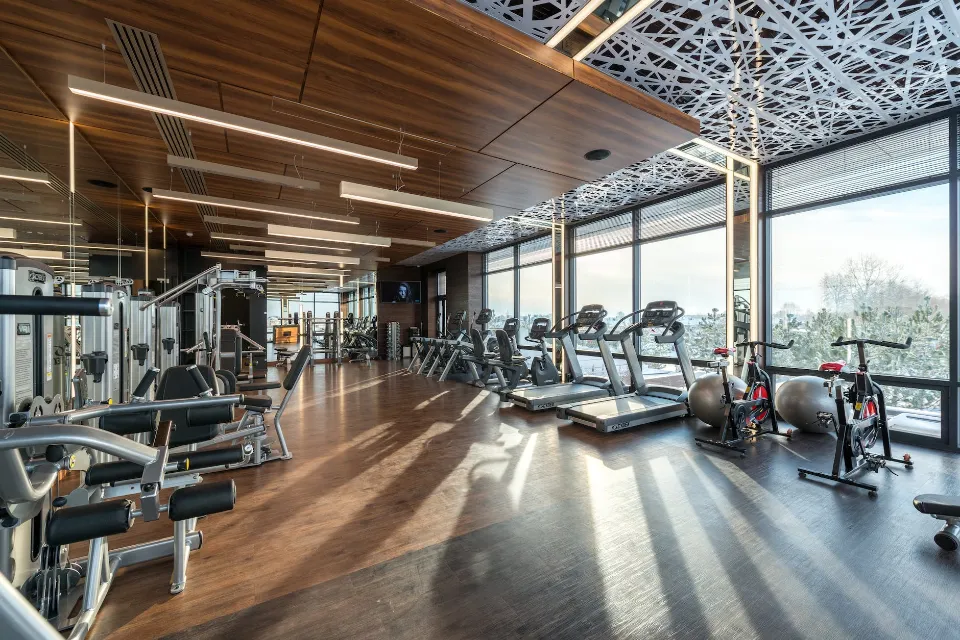For lower body and cardiovascular exercises, recumbent bikes are still a common choice. Some people prefer upright stationary bikes because they feel more comfortable. Some people merely favor them over other aerobic tools and exercises.
A bucket seat with a backrest is found on a recumbent bike. You are in a horizontal position while operating the machine because the pedals are in front of you. You won’t become lethargic as a result of the pressure being relieved from your lower back. Despite being a piece of cardio equipment, the bike works a variety of muscles when you use it. The muscles used for recumbent bikes and upright bikes are very similar.
The advantages of recumbent biking and the muscles it works are discussed in the article below.
Read more: What Muscles Does a Stationary Bike Work: Many! – Elder VIP
What is a Recumbent Bike?
A recumbent exercise bike allows you to ride while lying back. Riders can read or watch television while exercising because of this, which motivates them to ride for longer periods of time without getting bored.
This is important because you want to exercise for a long enough time to get the full benefits of your workout.1 However, don’t let these distractions diminish your workout intensity. Continue to push your body to keep progressing with your fitness program.

Many feel that recumbent bikes are more comfortable than other exercise equipment because of their reclined position. So, if you’re a first-time rider or new to cardio in general, recumbent bikes are a great way to get started, whether using a stationary version or one that allows you to go out on the road.
However, experienced exercisers can also use recumbent bikes. Varying your pedaling speed, upping the resistance, or cycling backward can make a recumbent bike more challenging. To suit your fitness level and goals, you can easily modify your workout.
Advantages of Recumbent Bike
The recumbent bike is a practical piece of stationary exercise gear for enhancing muscular strength, restoring range of motion, and enhancing cardiovascular fitness. With a backrest for comfort, these bikes are easy on your joints. Additionally, you can adjust the speed and incline to suit your fitness level, which makes it a better option for those with cardiac restrictions. Here is a closer look at these particular advantages as well as others.
Safety
A further advantage of recumbent bikes is that they are easier on the joints.3 The reclining position is also less taxing on the low back (lumbar spine), making it a great option for people with low back injuries. People who have cardiac restrictions can also benefit from it. A recumbent bike may be safer for you to use if you have balance issues because there is less chance of falling off than there is with an upright bike or other standing cardio equipment (like a treadmill or stair climber).
Comfort
Using a recumbent bike ensures complete back support while exercising. The larger seat is also typically more comfortable and reduces “saddle soreness” that can be experienced with smaller bike seats. Additionally, a stationary recumbent is a great indoor exercise machine when the weather is bad.
Self-determined Difficulty
The varying resistance and speed levels on a recumbent bike allow for a custom workout. You can adjust the incline settings on a stationary bike to simulate riding up and down hills and make the workout easier or harder. Depending on your fitness level, this exercise apparatus can be changed.
What Muscles Does a Recumbent Bike Work?
Lower Leg Muscles
The lower back portion of the legs, just below the knees, is where the calves are located. They are made up of the soleus, which is located beneath the gastrocnemius, which is the larger of the two muscles. You exercise your calf muscles each time your foot circles and you point your toes downward. This is called plantar flexion.
The tibialis anterior muscles oppose the calves. They run down the front of the shins and they get worked when your toes pull back towards your body during pedaling. This muscle recruitment will be enhanced when using foot pedals with straps.

Arm Muscle Involvement
Many upper extremity muscles are used by the arm cranks on some recumbent bikes. Squeezing the handles causes constant forearm muscle contraction. The biceps help to pull the handle toward your body and the triceps push it away.
Shoulder muscles, such as the anterior deltoid and pectoralis major, assist in pushing the arm crank. The posterior deltoid and latissimus dorsi help push the arm crank forward.
Glutes, Quads and Hamstrings
Your butt is primarily made up of the gluteus muscles, also known as the glutes. Every time your thigh moves back behind your body, these muscles are activated. The extension is the action of extending your leg. Every time you press down on a pedal, your glutes contract and your leg extend.
On the front of the thighs, there are four sizable muscles collectively known as the quadriceps. Knee extensors are what they do. They get worked on the recumbent bike to assist the glutes when you push the bike pedals, and also to help draw the leg back up again at the top of the pedaling motion. During this motion, the adductors, which are the smaller muscles on the inner sides of the quad, are also recruited.
The back of the upper thighs is where the hamstrings are located. Their primary job is to flex the knee; they are the quads’ opposing muscle group. This movement is evident when you pedal, as your lower leg moves from being straight to being bent. They activate along with the quads to draw the foot back to the top of the pedaling cycle
Conclusion
Cycling uses all of your thighs, including the quadriceps in front, the hamstrings in back, and the calves in the lower part of your leg. All the lower body muscles get a good workout when you ride a recumbent bike, according to this.
FAQs
Are Recumbent Bikes Good for Cardio?
You must doubt whether you are exercising at all when using a recumbent bike because it seems so easy and comfortable. Recumbent bikes do make the legs move, which is great, but are they cardio?
We are aware that cardiovascular exercise is a quick and efficient way to lose weight and increase blood flow. We are happy to say a recumbent bike is a great cardio workout. Every fitness level can do it safely, and you will work your lower body hard in the process.
Can You Burn Calories on a Recumbent Bike?
Your overall weight loss would be influenced by how much time you spent biking. So if you do a 30-minute workout for example it would equate to 260 calories burned on a recumbent bike. In only 30 minutes, this is a healthy number of calories. Your goals would be attained fairly quickly if you have the time and can dedicate yourself to doing it every day.



